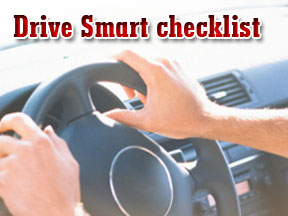 1. IDENTIFY THE HAZARDS
Weather
1. IDENTIFY THE HAZARDS
Weather
Rain, fog, ice/snow and winds
Roads
Narrow,winding, obstacles on or near the road itself and speed limits
Human Factors
Perception - what is seen
Attention Management - complacency, distracters, channelized fixation
Fatigue and alcohol use
2. ASSESS THE HAZARD
Damage to your vehicle, another vehicle, or personal property, injuries to yourself or others and death to yourself or others
3. DEVELOP CONTROLS & MAKE DECISIONS
Slow down and don't use posted speed limits as a goal
Use seatbelts, airbags, and child car safety seats
Expect the unexpected.
Take the necessary vehicle precautions and use less risky driving procedures to ensure you and your passengers arrive at your destination unharmed.
4. IMPLEMENT CONTROLS
Utilize vehicle equipped safety options like lights, ABS brakes, airbags, horn, and of course, restraining devices
5. SUPERVISE AND EVALUATE
Think of what you did and the eventual outcome
What did you do wrong?
What did you do right?
Did you do something and narrowly have a mishap?
What could you have done better?
What will you do the next time
Do other drivers have the same experience with this situation that can give you advice?